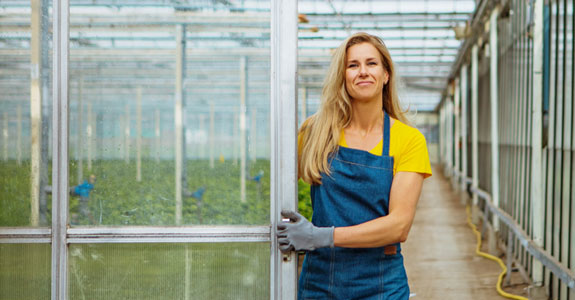What you can expect during a safety visit from your insurance provider
By Zach Bruce
Safety services manager for Hortica®, a brand of the Sentry Insurance Group
When you need help instituting a culture of safety or identifying potential hazards at your business, I'm one of the people who can help you.
As a safety services manager, my goal is to develop a relationship with you and work with you to build and maintain a safe workplace. Part of that process is conducting safety visits and examining your safety program.
Let's walk through what I do during one of my safety visits to help familiarize you with the process and prepare your team for future visits.
Reasons for a safety visit
There are four primary reasons I'll visit your business:
You requested a visit to help with your safety program
A visit is included as part of your safety services package from us
You've experienced work-related incidents or losses at your business
To help your business maintain OSHA compliance
I'll work with you to schedule a visit, typically providing at least 1–3 weeks' lead time before the appointment. In most cases, my visit corresponds with the lines of coverage you have with us. For example, if you have commercial auto coverage, I may pay special attention to driver safety and vehicle maintenance. However, if I identify a safety issue of any type, I'll discuss those items with my contact on-site.
Who's involved during a safety visit?
The individuals involved in a safety visit varies depending on your business and the goal of the visit. In some cases, I'll meet with the owner(s), CEO, CFO, or president. Other times, I'll meet with the human resources director or facilities manager. Typically, it's someone on the management team.
I encourage customers to walk with me as I conduct my safety evaluation. It's up to you to determine who you want to be present in the process. Choose someone who's involved in implementing your safety program, knowledgeable about your operations, and positioned to help your company follow through with recommendations after the visit.
What I look for during a safety visit
When I visit your company, I'm not simply looking for obvious safety issues that could pose an injury or illness risk for your employees and customers. I also want to examine how your business approaches safety.
Here are some things I look for and will inquire about:
Risks and hazards
Management attitude toward safety
Facility conditions (e.g., in greenhouses and buildings)
Housekeeping and maintenance programs
Safety processes and programs
Documented risk management policies
Safety training, including types and frequency
Customer safety
Fleet safety practices
Hiring practices
Driver experience, age, and selection
Driver training
Driver monitoring (including GPS tracking, dash cams, and decal program)
Cellphone policy
Maintaining a safe workplace is about more than keeping your business clean and limiting potential hazards, such as leaving hoses in aisles or stacking inventory too high. It's a proactive mentality that involves planning, implementation, and follow-up from employees throughout your organization. I'll examine what safety process you have in place and recommend areas where you might improve.
What happens after a safety visit
Once your safety visit is complete, I'll follow up by sending you a letter that includes recommendations to improve safety at your business based on my observations, your company reports, and conversations during our visit.
Recommendations might include eliminating the hazards I identified or outlining how you'll address a particular issue in a specified amount of time. In most cases, you'll need to respond to the recommendations within a certain timeframe provided in the letter. If there's no response, I'll follow up with you electronically or by phone.
In addition, depending on your interests, I can assist you with your safety program going forward, including conducting employee/supervisor training sessions remotely or on-site.
Why safety matters
Making safety a priority at your business can save you money. You might have to invest money up front to implement the strategies, resources, and programs we recommend if they're not already in place. However, a proactive safety culture can save you even more money in the future by helping prevent injuries, equipment breakdowns, lost time, and business interruption.
A culture of safety can help you improve employee morale, health, and effectiveness. In addition, your safety record plays into your company's reputation—within your industry and your community.
You're not alone
As an owner, you have a lot to concentrate on, and safety is just one component. Implementing a safety program takes time, planning, and employee buy-in. In many cases, your insurance carrier may be able to help you.
You have access to safety consultants like me—it's part of the business insurance coverage package we provide you. If you can, take advantage of that opportunity. We can help you create a safety program that includes employee training, educational resources, and regular inspections.
If you have questions or would like to learn more about our safety services and insurance coverages, contact us. We're here to help you keep your operation running smoothly and efficiently.
Related links:
Check out the top risks for horticultural businesses like yours and learn about the insurance coverages that can help protect you.
No matter what safety procedures you have in place, accidents can still happen. Get an extra layer of protection for your business with umbrella insurance.
Your business insurance policy should evolve as your operations and risks change. Use our insurance renewal checklist to help you analyze where your business has changed.
Safety services are provided by a member of the Sentry Insurance Group, Stevens Point, WI. For a complete listing of companies, visit sentry.com.
The information in this article is for informational or entertainment purposes only. View our disclaimer by going to terms and conditions and clicking on Learning Center disclaimer in the table of contents.
